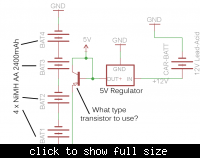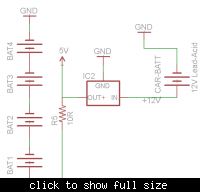MagSMG
Newbie level 3
Hi guys, I see a few posts here regarding this - but don't understand them too well.
I need a backup battery in my circuit and also my mains power needs to be stepped down to 5V from 12V.
The battery needs to charge when necessary.

I have created this schematic for what I need. Please tell me if it could work or what I am missing.
Thanks a lot for your time!
I need a backup battery in my circuit and also my mains power needs to be stepped down to 5V from 12V.
The battery needs to charge when necessary.

I have created this schematic for what I need. Please tell me if it could work or what I am missing.
Thanks a lot for your time!
